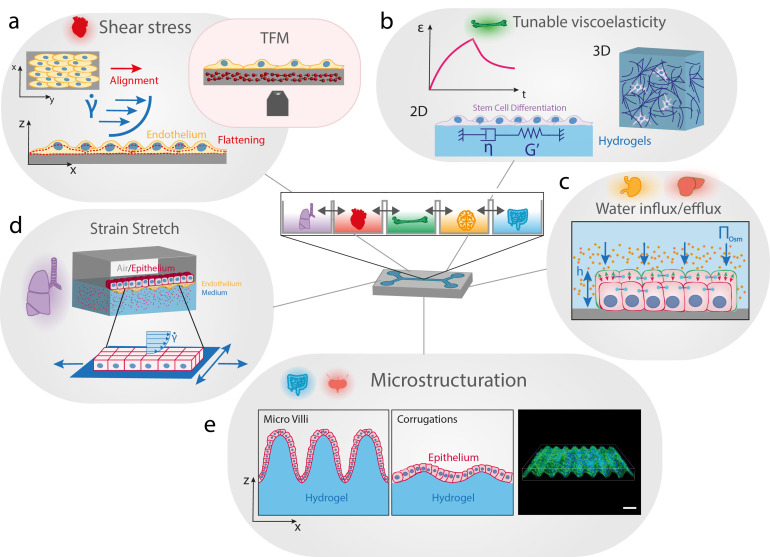FIG. 4.
Advanced bioengineered platforms integrating mechanobiology assays. (a) The shear stress exerted on endothelial cell monolayers can trigger multiple cell shape changes, such as elongation and flattening. Traction force microscopy (TFM) can be integrated to microfluidic devices by incorporating micrometric beads into an elastic elastomer to provide the cellular traction force field in response to a given shear stress. (b) Time-dependent mechanical properties of native tissues are a crucial determinant of cell shape and fate. The next generation of synthetic matrices must have well-defined stiffness and tunable viscoelastic properties, with variable relaxation times. 2D and 3D encapsulating hydrogels are useful synthetic matrices for studying the influence of viscoelasticity on epithelial cell fate. (c) Aqueous solutions of polymers can be used to modulate the osmotic pressure and trigger cell shape changes via volume expansion/diminution. (d) Microfluidic devices can integrate air/cell and liquid/cell interfaces and reproduce complex strain fields by incorporating uni- or multi-axial stretchers. Stretchable microfluidic devices with dual interfaces allow to mimic the microenvironment and the mechanical loading of epithelial lung tissues. (e) Villi in the small intestine and corrugations of many epithelia impose curvature changes at the cellular scale. Soft hydrogels can be shaped to form corrugations that reproduce variations in local curvature. Sinusoidal culture surfaces allow to study how epithelial monolayers adapt and sense cell-scale curved topography.

